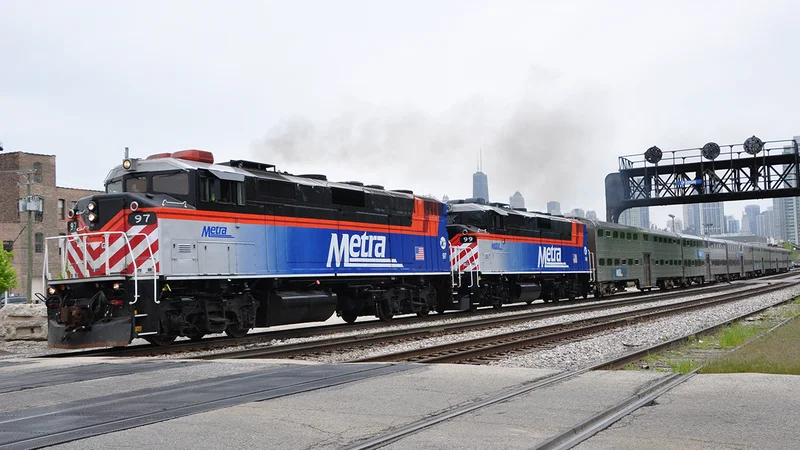Article Directory
Here is the feature article written in the persona of Dr. Aris Thorne.
*
The Analog Blind Spot
The details are stark, simple, and sickeningly familiar. A man, his dog, a stretch of train tracks in Morton Grove. Then, the blare of a horn that’s designed to warn but is so often just the prelude to a tragedy, followed by the screech of thousands of tons of steel trying to defy the laws of physics. For the man and his dog on Tuesday afternoon, the story had a definitive, brutal ending. For the rest of us, it should be a beginning. A furious, impatient, and demanding beginning.
When I read the news, my first feeling wasn't just sadness. It was a deep, frustrating sense of anachronism. This is a 19th-century problem that has persisted, stubbornly, into the 21st. We live in an age of autonomous vehicles that can spot a pedestrian from a hundred yards away in the dark, of smart homes that know when we’ve left a window open, of watches that can detect an irregular heartbeat. Yet, our railways—these massive, powerful arteries of commerce and transport—operate with a terrifyingly analog blind spot.
Why does this keep happening? It’s not because the engineers are careless or the trains aren't powerful. It’s because we’re strapping a supercomputer to a dinosaur. The modern locomotive is a marvel of engineering, but its ability to perceive the world ahead of it is still largely dependent on two human eyes looking through a pane of glass. It’s a system with a reaction time measured in whole seconds, when milliseconds are the difference between life and death.
This isn’t an accident. It's a design flaw. It’s the result of treating our railways as static, dumb corridors of steel instead of the dynamic, intelligent networks they need to be. We’ve meticulously upgraded the train, but we’ve completely neglected the track. How many more headlines do we have to read before we realize the problem isn't just the train, but the entire ecosystem it operates in?

Weaving a Digital Nervous System
So, what’s the answer? It’s not about building bigger fences or posting more warning signs. That’s an old solution for an old problem. The real answer is to give our railways a nervous system. To extend the train’s awareness out onto the tracks themselves, creating an intelligent, responsive safety net that can see and react far beyond the limits of a human operator.
Imagine this with me. A continuous network of low-cost LIDAR and thermal sensors—in simpler terms, light-based radar and heat-vision cameras—lining every mile of track in populated areas. These aren't just cameras recording for later; they are active eyes, constantly scanning, building a real-time 3D model of the environment. They don't need daylight. They aren't fooled by fog. They can distinguish a deer from a person from a piece of debris instantly. This is the kind of breakthrough that reminds me why I got into this field in the first place.
This data would feed into local edge computing nodes that could identify a person, a dog, a stalled car in milliseconds and communicate that threat directly to an oncoming train's braking system and the central command long before a human operator could even process what they’re seeing—it’s a level of preventative safety that is so far beyond our current model it’s almost a different species of infrastructure. The train wouldn't just be warned of a threat; it would know about it, precisely where it is and what it is, with enough advanced notice to actually do something about it.
This isn't science fiction. Every single piece of this technology exists today. It’s in our cars, it’s in our factories, it’s in the drones that deliver our packages. The only thing preventing its implementation on our railways is a failure of imagination and, frankly, a lack of will. We treat these tragedies as isolated, unavoidable events—the cost of doing business. What a catastrophic failure of perspective. This is the 21st-century equivalent of arguing against the installation of the first traffic lights because horses and buggies had managed without them for centuries.
Of course, there are questions of cost and scale. But what is the cost of a human life? What is the cost of shutting down a major transit line for hours, over and over again? The real question isn’t whether we can afford to do this, but how much longer we can afford not to. We have a moral and technological imperative to build a world where a walk with your dog near a set of train tracks doesn’t carry a death sentence.
We Can Engineer These Endings Out of Existence
Let's be perfectly clear. The event in Morton Grove wasn't an "act of God" or some unavoidable freak occurrence. It was a systems failure. It was the predictable, tragic outcome of running 21st-century lives alongside 19th-century infrastructure awareness. We can, and we absolutely must, do better. These aren't just "accidents"; they are data points telling us where our systems are broken. The technology to fix this is sitting on the shelf. It’s time we stopped mourning these preventable deaths and started engineering them out of existence.
